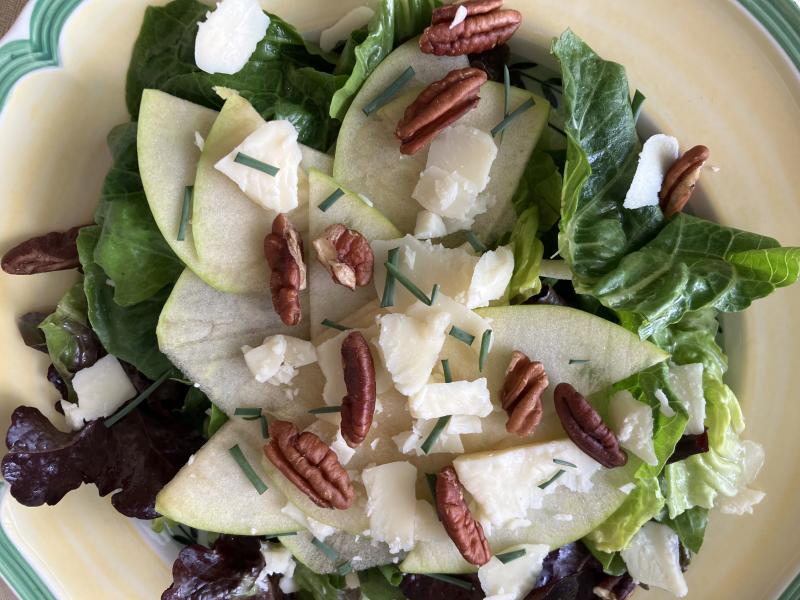Autumn means apple time; local markets offer diverse types
Since last week was all about scrapple, it seems appropriate to focus this week on apples. Let’s start with the question: Johnny Appleseed, man or myth? According to food historians, John Chapman, born in Massachusetts in 1774, was the basis of tales about a man who traveled far and wide encouraging farmers to grow apple trees. However, he may not have had to work too hard. Because of the uncertain quality and unreliable sources of fresh water, apple cider was already the drink of choice for people living in his time.
When settlers to our region arrived, they brought apple seeds with them – a good plan, since the only local tree variety was crab apple, the fruit of which was suitable for sweetened jellies or dried fruit leather. Fortunately, the Europeans who arrived brought more than one type of apple seed, giving the trees chances to cross-pollinate and create new varieties.
While some of the newer hybrids might not have been appealing to eat fresh out of hand, cider was the perfect alternative. This potable beverage was safer and healthier than water. Often, it would be allowed to ferment slightly into what we would call hard cider, but without the high alcohol content you may find in modern versions. This was served to everyone in the household, including children.
One of the oldest dishes made from apples was the familiar apple pie, as noted without great enthusiasm by Israel Acrelius, a parson from Sweden who arrived here in 1759. “Apple pie is used throughout the whole year. House pie, in country places is made of apple neither peeled or freed from their cores, and its crust is not broken if a wagon wheel goes over it.”
If you’ve been to any of the recent farmers markets or visited local farmsteads, you would have encountered a wide range of choices among fresh-picked, locally grown apples. In the list below, I’ve highlighted some of the favorite varieties available from most growers. The type in the apple-cheddar salad in the photo is called Mutsu, which originated in Japan, where they are popular for dessert.
These are fairly large apples, with a somewhat irregular shape, more conical than round. The skin is smooth with a yellow-green shaded hue. The interior flesh is quite white and crisp. This varietal is known for a sweet-honey flavor combined with tangy, acidic notes. They become available here in early October and can be stored through the winter. In the United Kingdom, you will see these labeled as Crispin apples.
Cooking with apples, beyond pressing them for cider, has been a culinary mainstay in the American diet for centuries. Early cookbooks include recipes for apple puddings, where beaten eggs are added to a highly sweetened applesauce mixture and baked into a firm custard. By the time of Fannie Farmer’s cookbook volume, there are dozens of recipes for apple dishes, from pies to fritters and sauces.
One of the modern recipes I found on the internet was for an apple and cheddar cheese soup. Some of the recipes added spices like cinnamon and nutmeg, which clashed with the tartness of the cheese. Others included boiled sweet or white potatoes as thickeners. The batch I made was somewhat disappointing, too sweet and too sharp at the same time. Instead, I ate the salad in the photo for lunch!
Apple Cheddar Salad
Rinse and drain the lettuce; place in a serving bowl. Core the apples and slice into thin crescents or bite-size pieces; scatter over the lettuce. Crumble the cheese and scatter over the lettuce. Roughly chop the nuts and add to the salad. In a small measuring cup, whisk together remaining ingredients. Drizzle over the salad and toss to combine. Yield: 4 servings.


















































